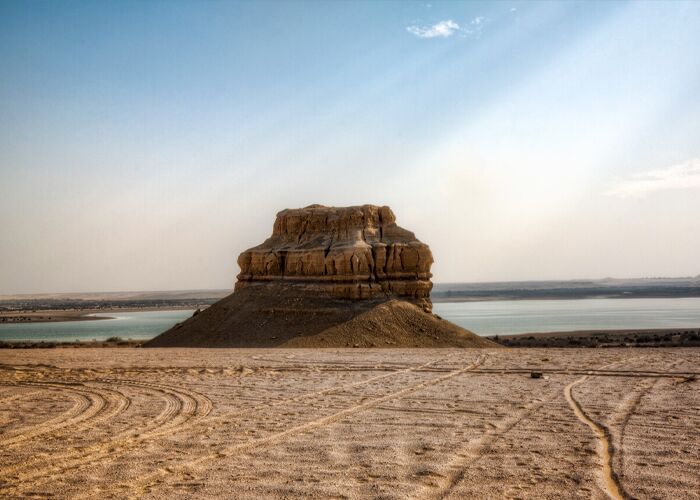El Fayoum, Egypt’s Paradise
Rather than water flowing from the ground, this artificial oasis, also known as Joseph’s canal, was created by a long canal naturally formed by the flooding Nile that dates back to Legendary times and was named after Joseph, the biblical hero who established the oasis.
Location between the Nile and Birket Qarun’s big lake makes this area rather large.
The Fayoum’s peculiar character and ambiance are owed in large part to this vast lake, which looks like the sea on a bad day.
Celebrities like Winston Churchill and King Farouk used to visit the lake’s southerly hotels as they shot their firearms at the flying ducks in the sky.
Birdwatching has increased dramatically although duck hunting is still taking place on this lake and the neighbouring Wadi Rayyan, an artificially constructed stretch of water.
Since then, Lake Qarun has been polluted with salt water.
Freshwater plankton and fish bones found in mud deposit samples demonstrate this.
The Nile’s floods were powerful enough to restore Lake Nasser’s water supply in ancient times.
Water entering Lake Eyasi has been more agricultural runoff than fresh water since the British building of a dam at Aswan (which acted as a forerunner to a later high dam) and a canalization system that included more widespread Nile canalization in 1900s as a consequence of these changes.
Since Lake Qarun’s salinity has risen, most of the lake’s fish are marine species that have been transported from the Mediterranean.
There’s a modern village in the middle of the Fayoum Oasis that’s surrounded by a lot of palm tree plantations.
Some of the Pharaonic and Roman ruins may be discovered in the desert north of Lake Qarun, along with some antique water wheels and other artifacts.
In the oasis, where they feed on lush green grass known as berseem rather than the desert’s thorny scrub, camels perform much of the donkey work instead of donkeys.
Near the Wadi Rayyan protected area in Fayoum, there are two lakes connected by a small waterfall, which is the only one in the Egyptian desert. Wadi Rayyan, a protected region inside Fayoum, is also included.
Visit the Wadi Rayyan monastery, where modern-day monks carry on the traditions of their ancient forebearers who built rock caves here during the early days of Christianity.
Visitors to the Wadi Rayyan tourism attraction in Egypt may observe the lake, which is a popular resting spot for birds flying from Africa to Egypt.
Located west of the Fayoum River, the Whale Valley is part of a journey that will be detailed later in this book.
To begin with, it should be emphasized that the fossilized remains of extinct whales may be discovered in Whale Valley, also known as Wadi Hitan.
It’s well worth the trip to check out this odd and massive haunted mansion.

